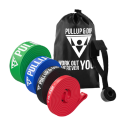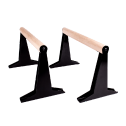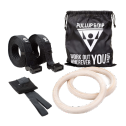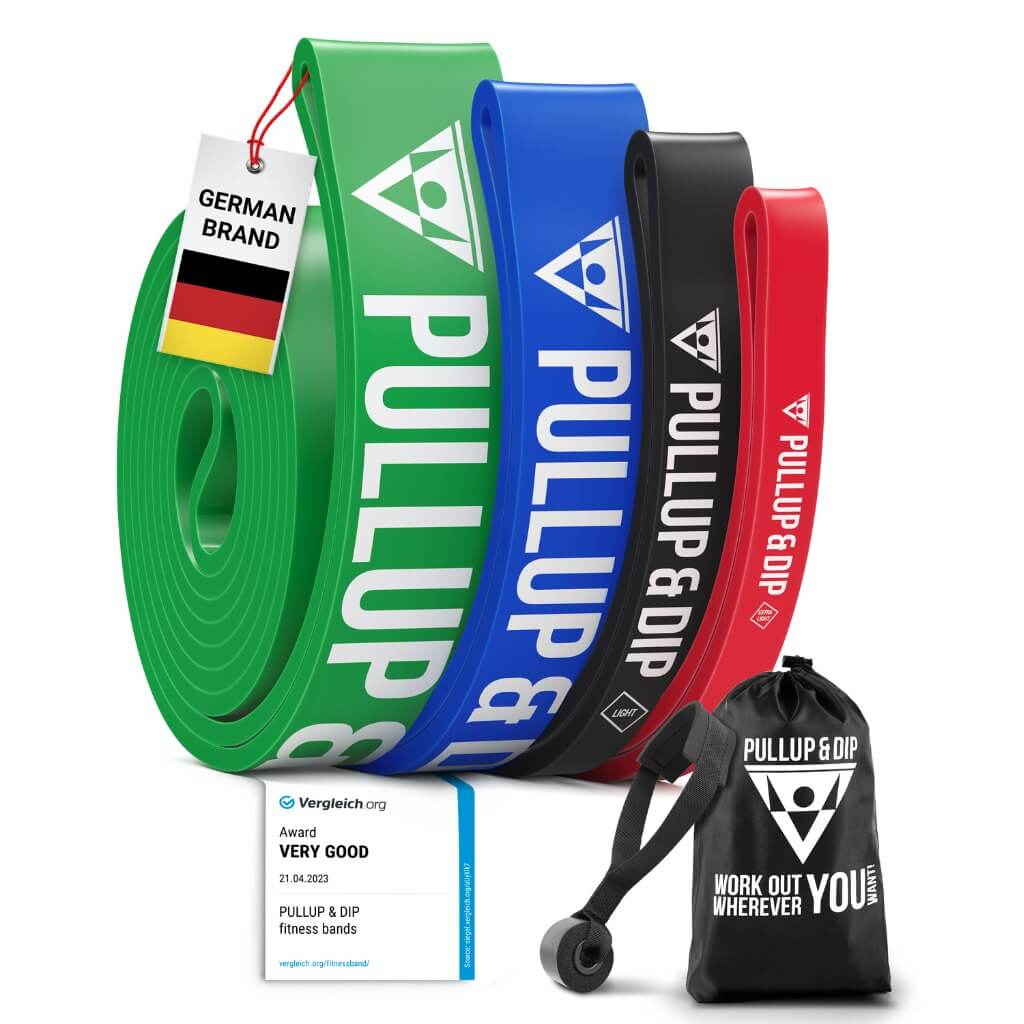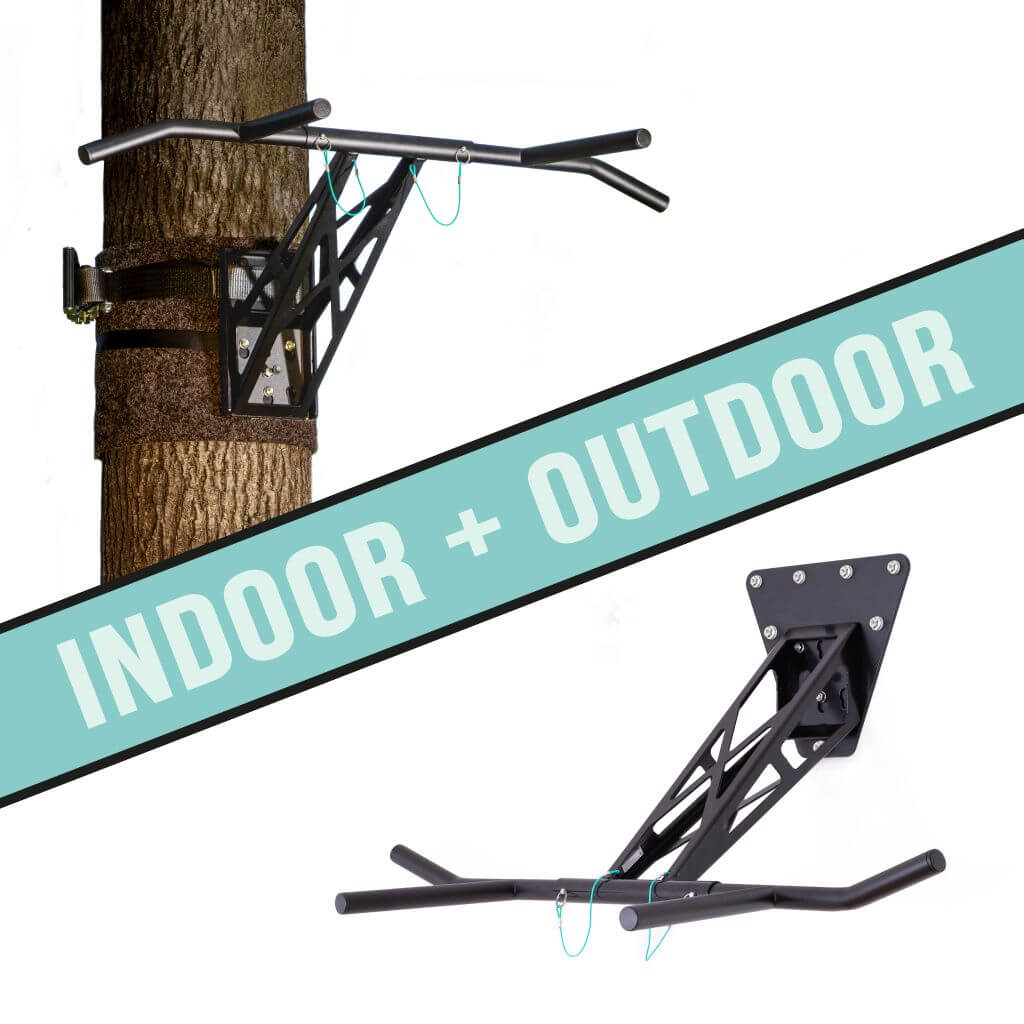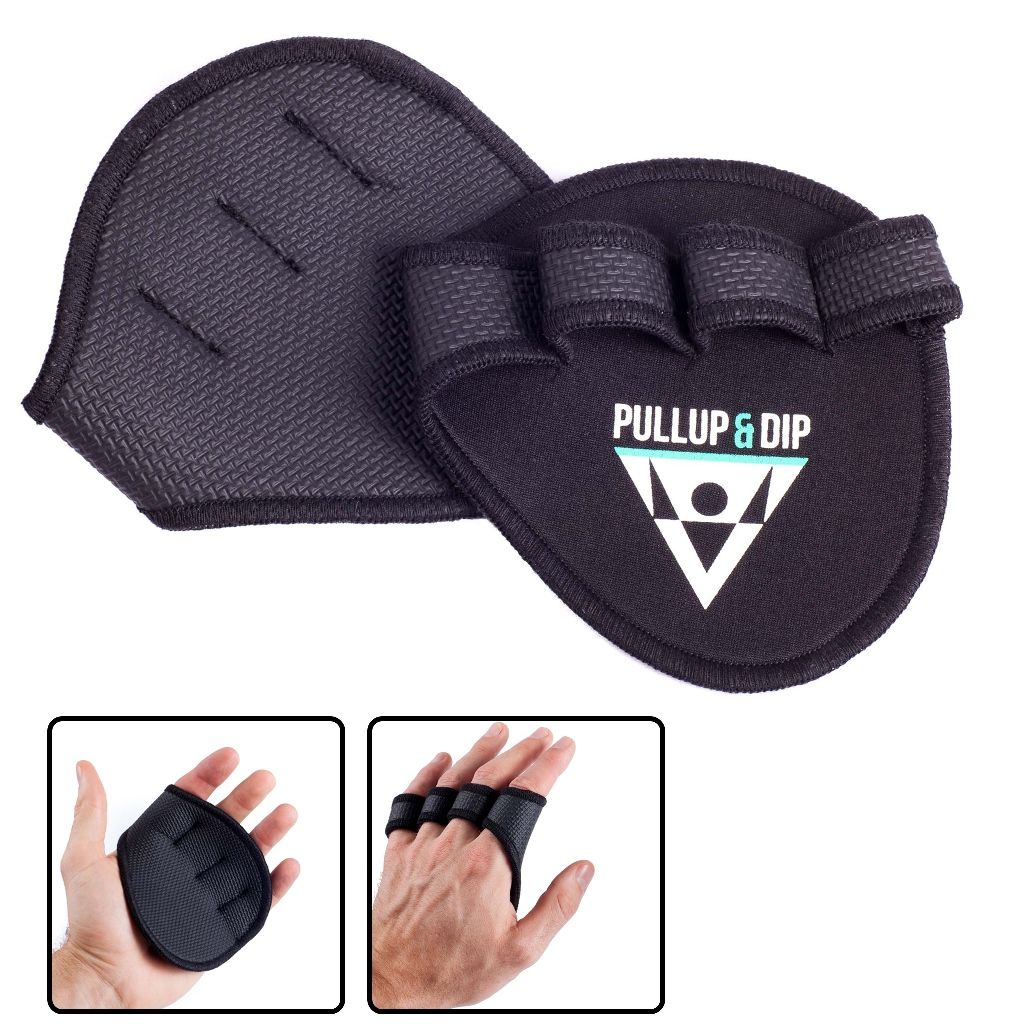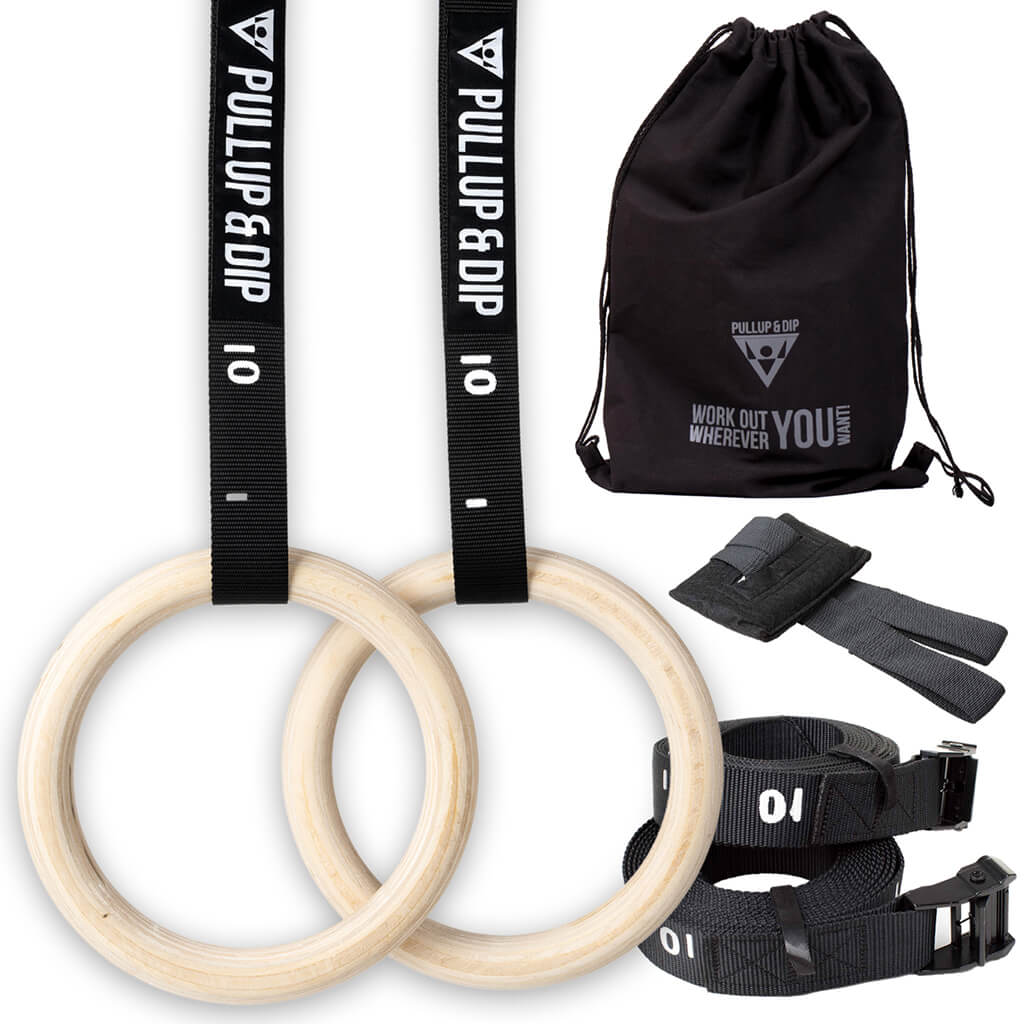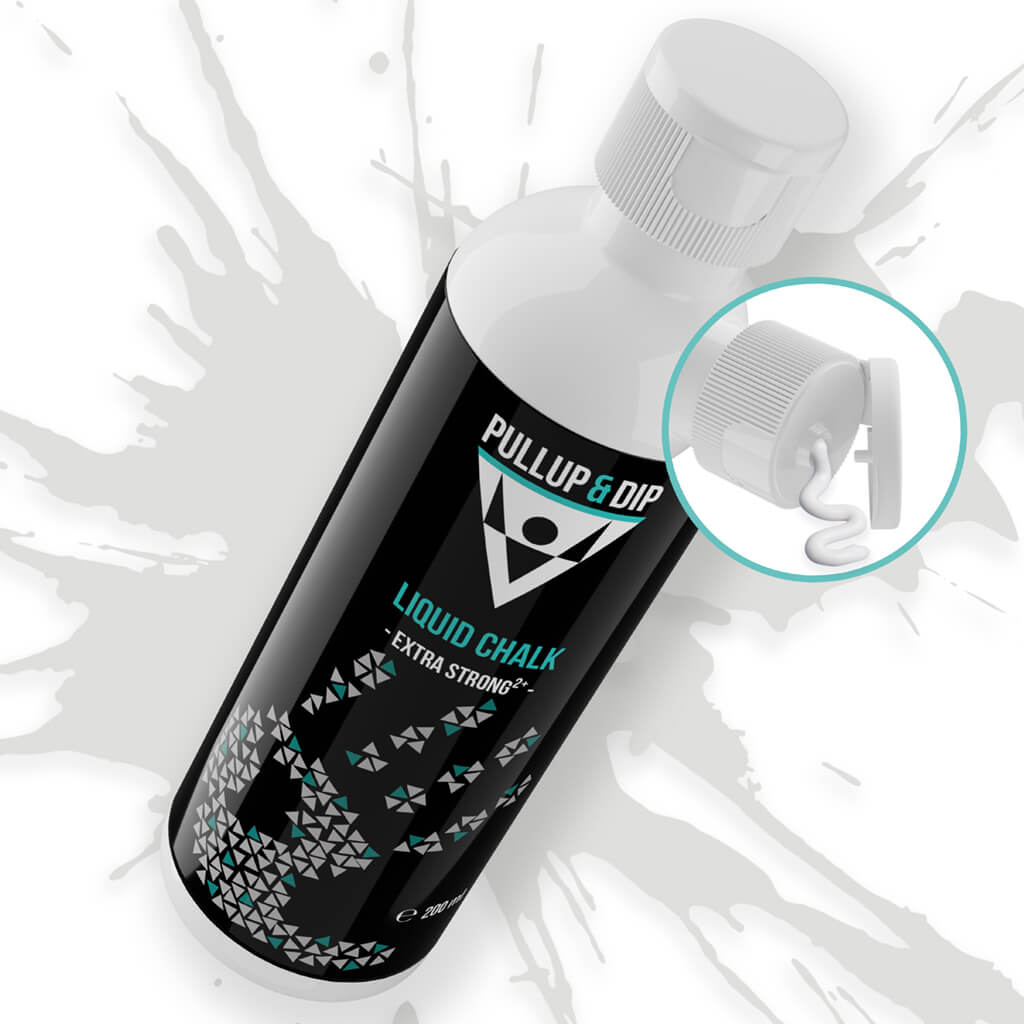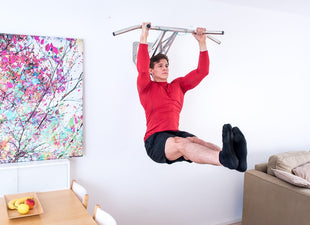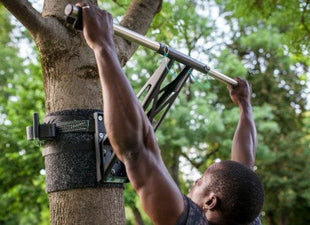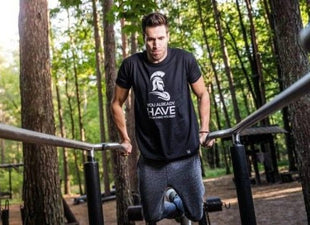A fascinating and at the same time effective exercise in the field of fitness are Pull-ups. With this exercise you manage to train numerous other muscle groups besides your back. In addition, you hone your body tension and general fitness. Since it is a dead weight exercise, the workout is also extremely easy on the joints. Last but not least, let's not forget: Pull-ups look particularly impressive! Because when the entire back musculature moves during the up and down of the pull-ups, then everyone sees exactly what you have to offer athletically.
Can anyone learn pull-ups?

But in order for you to achieve chin-ups that are worth seeing and, above all, precise in terms of execution, you first have to take a few things into account. For this reason, we explain in this article how you can learn pull-ups. This article is very suitable for beginners as well as advanced users. Because even advanced users can learn a lot of new things about the different variations of pull-ups as well as individual details. Pull-ups are a versatile exercise that anyone can learn!
Why should you learn pull-ups?
Not only can anyone learn pull-ups, but everyone should learn them. Because with the training of the musculature numerous groups of people are helped very well:
Runners, swimmers & other athletes:
An appeal to you to also try out strength training with your own body weight: Namely, better muscle growth comes from an additional stimulus, supporting your actual sports.
People with "sedentary" jobs:
You snooze, you rust? It's the same with people. Because frequent sitting puts a lot of strain on the back, leads to tension and causes a lot of pain - at least that's how it usually behaves. A strengthened back counteracts all this.
People with a desire for better general fitness:
Are you looking for a little exercise to do at home? Just want to do a little something for your general fitness to feel better? If so, pull-ups are a highly effective exercise that can be done at any time.
Regardless of these groups of people, pull-ups and resulting muscle growth in the back generally bring various benefits:
- Lower risk of injury
- Increased calorie consumption & weight loss
- Aesthetic & strong appearance
- Better interaction of the muscles
Since the many benefits clearly speak for the muscle exercise, we now devote ourselves more intensively to learning pull-ups.
Which muscles do pull-ups train?

Conspicuously many people overlook when doing pull-ups, how many muscles are actually in interaction and thus trained. First and foremost, the fact that it is a bodyweight exercise ensures that a multiple benefit in the training of various muscles muscles. The following muscles are thus trained during pull-ups:
- Upper back
- Biceps
- Abdomen
- Chest

The upper back is undoubtedly the focus of the exercise and does most of the work. This is because whenever pulling movements take place in the upper body, the upper back is called upon. What is particularly beneficial about pull-ups is that when training the upper back, a wide range of motion occurs, which has a very positive effect on muscle growth.
The Biceps provides crucial support for the back during pulling exercises. Although the two-headed muscle is very small, visually and for the ideal development of the strength potential in the back, a trained biceps is indispensable. Depending on the grip on the pull-up bar you involve the biceps more or less.
Finally, the abdominal and chest muscles should not be forgotten: Admittedly, pull-ups are not expected to develop the abdominal or pectoral muscles to any significant degree. But to some extent, abdominal and chest muscles are even trained during pull-ups. This is because the abdominals must be tense for optimal body tension, and when starting a pull-up, the pectoral muscles easily help out.
What mistakes to avoid when doing pull-ups

Particularly great motivation is always a good sign in principle and is registered very readily when learning pull-ups. But unfortunately, the line between motivation and over-motivation is a fine one. If over-motivation is present, it can lead to several mistakes during pull-ups occur:
- Inaccurate execution
- Too fast increases of the workload
- Lack of training breaks
- Training until bitter failure
Over-motivation can therefore lead to many annoying mistakes. Inaccurate execution can lead to joint damage or pain, while the lack of breaks in training and the resulting lack of regeneration can be very counterproductive for muscle growth.
In addition to over-motivation, a potential mistake with pull-ups is to start learning them too early. This is because it is often a problem - especially for beginners - if certain muscles are not already developed to some extent. Let's imagine that you have weak upper back muscles and you want to pull yourself up, then it becomes problematic.
That is why it is recommended to do a test:
- Hang from the pull-up bar in a wide grip, which means: hands wider than shoulder-width and with the backs of your hands facing you (overhand grip).
- Now pull yourself up in a controlled manner: No swing, but the body as a straight line. If you can get your chin over the bar, you have successfully completed your first pull-up.
- If you don't succeed, then you don't have enough strength yet. In this case, try a simpler variation of the pull-up: You put your arms at the width of your shoulders, but this time with the palms facing you (underhand grip).
- If you do not succeed in this repetition, it is recommended to train the involved muscles chest, abdomen, back and biceps first and to strengthen these muscles.
Since many mistakes result from over-motivation and practicing the pull-ups too early, you should ideally first check the current situation with the test just mentioned. If one of the two pull-up variations - whether in the overhand or underhand grip - then you are ready to consistently include pull-ups in your training program. If you do not succeed in both pull-up variations, then it is advisable to practice with other exercises beforehand, which you will be informed about in the following.
The equipment needed
Among the necessary equipment falls first of all as an absolute basis the pull-up bar. Because without a pull-up bar you will not be able to pull yourself up. So, if you are not enrolled in a gym, it is recommended to buy a pull-up bar for home. But even if you are in a gym, the purchase of a pull-up bar is a worthwhile investment, because you can do something useful for your body and your health every now and then in between at home. There are different models of pull-up bars. One is the very practical and portable pull-up bar for the door frame. You can already mount this without much effort, which makes it usable almost everywhere. Otherwise, screw-on pull-up bars for the wall and ceiling are alternatives. These are of course more solid, but can only be used in one place and are not portable. Especially you will benefit from our pull-up bar from Pullup & Dip, because you can also train dips with it.
Further equipment besides the pull-up bar are pull-up straps with which you can effectively warm up for the exercise and bring the muscles to operating temperature.
To our pull-up bars!
[product="P-00012"]
Learn pull-ups
Now that the basics are settled, let's turn our attention to learning pull-ups. First, we'll examine the different types of pull-up grips and the preliminary exercises you can use to increase your strength in order to achieve the goal of perfect pull-ups.

The different variations
Basically, pull-ups always train the same muscle groups and require the same attentiveness during execution for a precise and healthy workout. However, there are different variations that allow you to accentuate which muscle group is more or less challenged. The following table gives you an overview of the different variations and their characteristics:
| Variation of the pull-up | Properties of the variation Effect on muscles |
| Underhand grip | The palms face you and the grip is shoulder-width. The biceps are particularly involved. |
| Upper grip | The palms face away from you and the grip is shoulder-width. The shoulders are trained more intensively. |
| Tight | The palms face you and the grip is almost hand to hand. Here the biceps are trained first and foremost. |
| Wide | The palms face away from you and your hands are wider than shoulder width apart. This variation trains the upper back the most. |
| One arm | You do the pull-up with one arm, palms facing you. Always train the one side on which the exercise is done; the biceps are especially challenged. |
Especially at the beginning of learning pull-ups, it makes sense to focus on the easier variations as in the lower and upper grip or the narrow pull-up. The wide pull-up would be the next level up and the one-arm pull-ups are absolutely something for advanced users.
Preparatory exercises for the first pull-up
If the strength is not enough or if the precision of the execution is not precise enough, then it is definitely necessary to work on stronger muscles with preparatory exercises. This way you will be perfectly prepared for the supreme discipline of pull-ups. We briefly present you three useful exercises:
- Rowing with dumbbells
- Push-ups
- Hanging leg raises on the pull-up bar

The fascinating thing about rowing is that you can do it in various different ways with dumbbells: Whether with the barbell bent over, with the dumbbells propped up on the edge of a table at home, or as T-bar rowing! You create the best conditions for building strength in your upper back and train your entire body tension.

Otherwise, push-ups are recommended to get a perfect start with pull-ups. Sometimes pull-ups fail because you don't get going at the beginning, when the chest muscles are working a bit. For this reason, push-ups are an ideal preliminary exercise for building up the chest muscles, but also for strengthening the back and again body tension. To protect your wrists and to intensify the exercise, we recommend the use of push-up grips.
To our push-up grips!
[product="P-01001"]
Want to learn push-ups? In our Youtube video "How-To: First Push-Up [Beginner Tutorial]" you will learn how.

Last but not least, the Hanging Leg Raise on the pull-up bar Here the advantage is that you are already on the pull-up bar and thus have a preliminary exercise that is closely related to the actual pull-ups. Through the leg lift you strengthen your abdominal muscles and improve the body tension in the middle for learning pull-ups. For support you can also use abdominal training straps You can also use abdominal training loops to support yourself with your arms in the loops so that you can fully concentrate on the exercise without fear of losing grip strength.
Perform the right pull-up

Once you've laid the foundation with the preliminary exercises, you're ready to perform the proper pull-up. This looks like this:
- Hang from the pull-up bar in the desired grip - the tighter, the easier for beginners.
- Now start pulling yourself up out of the strength of your back and arms. "Out of the strength of your back" here means that you don't use your lower body to propel yourself up, but simply let your lower body hang under tension.
- When you pull yourself up, do so until your chin is over the bar. Then the height fits and you hit the muscles of the upper back optimally due to the enormous range of motion.
- Now slowly lower yourself down. It is important that you do not let yourself fall, otherwise injuries can occur. So the motto: Slowly return to the lower point!
- Keeping the tension up, you go up and down as often as you can at first.
In the beginning you practice the pull-ups without aiming for a certain number of repetitions and sets. But over time, you'll get better and better and opportunities will open up to create and design a workout plan. Which brings us to the final topic of this post....
Training Plan
We already have a comprehensive workout plan available on our blog that you can work very well with. At this point we would very much like to refer to this pull-up training plan to this training plan. You can find it at the link below and become a chin-up expert from a very young age. This training plan is also very suitable for advanced users.
Conclusion: Pull-ups for a well-shaped and healthy back
Pull-ups are a supreme discipline as an exercise for the upper back. At the same time, however, they also train other muscles. With this exercise you are optimally equipped to shape your back, strengthen it and generally make it healthier. Tension and injuries are often the result of a lack of movement or incorrect use of the muscles. The pull-ups put an end to all that and open the way to a healthy and well-shaped back.
Are you looking for a pull-up bar to effectively learn pull-ups?
At Pullup & Dip, we offer high-quality pull-up and dip bars for your home and garden.

Recommended articles:
Pullups- Everything you need to know about them & the top tips
 Other Equipment
Other Equipment
 Gripping Aids
Gripping Aids
 Bandages
Bandages
 Tapes
Tapes
